May, 2021
now browsing by month
How can we apply current debates and discussions about racial equity and social justice into our art curriculum?
Kristin Baxter, Ed.D. is an Associate Professor of Art and Director of the Art Education Program at Moravian College and member of Region 10 of PAEA. She also continues to teach children, adolescents, and families through her work as a mindfulness and art teacher at Shanti Project.
This spring the YWCA created an online “21-Day Racial Equity and Social Justice Challenge.”
https://www.ywcachallenge.org/session_catalog/#/attendee/B5364140-019C-4D80-82FB-FA101A6EA528/catalog Each day, since, April 19, I’ve received a selection of videos, articles, and podcasts curated around themes such as Reparations for Slavery; Reparations and Indigenous People; Ending the use of Native American Imagery in Sports; Intimate Partner Violence in the LGBTQ+ Community, among others. Like many of you, as I read, watch, listen to, and participate in debates and discussions, I am continually asking myself, how can I continue to build meaningful, robust content around racial equity and social justice in my art classes?
This blog entry describes how I’ve done this through Moravian College’s Town Hall program. I’ll also present ideas and questions that I will take to my classes in the future, that might spark some reflections for you too.
Moravian College hosts an annual Town Hall each spring. The Town Hall is made up of about 10 courses across disciplines, including over 150 students and faculty. When a faculty member agrees to teach a Town Hall course, they include a research project for their students based on one of four annual, academic themes: Healthcare; Sustainability; Poverty and Inequality; War, Peace, and the Just Society.
One of my art education methods courses, called Art Material Investigations: Processes and Structures, was one of the Town Hall courses this spring of 2021. My students researched contemporary artists whose work engages with one of those academic themes. During the virtual, online Town Hall event this past April, my students were placed in breakout rooms according to those academic themes. Each breakout room had roughly ten students from across all of the Town Hall classes, whose research fit within the same theme. Each group also included a faculty moderator and a community member, such as local school leaders, politicians, and business owners. In this way, the Town Hall fosters interdisciplinary discussion and action to solve critical issues for our contemporary world and demonstrates how interconnected many social, political, and economic problems are.
As a culminating part of their research, my students created their own works of art, based on the artists they researched. Through the use of a variety of processes and materials during our course, students also identify which art materials best communicate certain ideas.
One of my students, Janessa Ternosky, researched LaToya Ruby Fraizer, an African American activist and artist, who is well-known for her documentary-style black and white photographs that record the impact of environmental devastation on the health and well-being of marginalized families and communities in the Midwest. Inspired by Frazier’s work, Janessa created her own series of black and white photographs. Janessa explains, “my photo series, A Place Like Home, explores my childhood home and how the town I came from shaped and affected my family as a whole and ourselves individually” (Janessa Ternosky, personal communication, April 27, 2021).
Credit: Janessa Ternosky, Sister, 2021, and Grandpa, 2021 from the series, A Place Like Home. (Photos used with permission).
Another student, Ashlynn Forney, researched Kerry James Marshall, whose art references the Civil Rights Movement and addresses the “invisibility of Black people in America and the unnecessarily negative connotations associated with darkness” (Art21, 2021, para. 4). Ashlynn’s mixed media piece, entitled “Impactful Faces” was inspired by Marshall’s mixed media work “Untitled Self-Portrait (Supermodel) from 1994. Ashlynn explains that “a variety of historical photos that display instances of racial injustice, segregation, the Civil Rights Movement, and impactful individuals during those moments were strategically places around the painted portrait” (Ashlynn Forney, personal communication, May 2, 2021).
Credit: Ashlynn Forney, Impactful Faces, 2021, mixed media on canvas, 11” x 14.” Inspired by Kerry James Marshall’s work “Untitled Self-Portrait (Supermodel), 1994, mixed media on paper, 1994. (Photo used with permission).
Through participating in the Town Hall and also in the YWCA’s “21-Day Racial Equity and Social Justice Challenge,” I wrestle with questions that I could use to prompt discussion and artmaking in my classes next semester.
Perhaps these reflections might also inspire you to see how issues of racial equity and social justice could impact your teaching too:
- Danielle Bainbridge (2020, December 9), in her video titled The History of Reparations, describes how the City of Chicago paid reparations to victims of Jon Burge, police commander. From the 1970s-1990s, Burge led police officers to torture Black men into giving confessions for crimes they did not commit. Part of the reparations that were part of the settlement included mandatory curriculum in the Chicago public school system about Burge’s crimes. What role do you think public school, PreK-12 education in general, and art education curriculum design in particular, could play in reparations?
- Has your favorite sports team changed its name, mascot, and/or logo because it was originally racist? How were multiple cultural perspectives and organizations involved in choosing the new name? Imagine that you need to create a new name, logo, and mascot for your team, what steps would you take to create these? Who would be involved in the designs? Dr. Anton Treuer (2019, December 13), Professor of Ojibwe and Native American author, argues that we need to have ethics around this issue in sports culture. What role does the study of ethics play in design and art education?
- Amy Graff (2017, August 30), in her article titled, “The next generation of California public school students will skip the ‘mission project’,” she describes how the “fourth-grade tradition of building a California mission out of Popsicle sticks and sugar cubes is being pushed aside by the state as history lessons change to reflect all cultures and more accurately depict the past” (para. 1). In addition to ignoring how the missionaries impacted the Native people in the area, the art project had few meaningful art learning objectives. One parent is quoted in the article as remarking: “I was so relived they didn’t have to build that dumb building (as I did back in 1980) and that they got a fuller picture of life in California at that time” (para. 10). How are art projects that are meant to broaden understanding about cultures actually racist and support stereotypes? If your current art education curriculum includes a culture- or history- based project, how might you reflect on its relevance? Is that project culturally biased or even racist?
- 80% of women and children who have experienced homelessness have also experienced domestic violence (National Resource Center on Domestic Violence, 2017, May 30). Survivors of domestic violence and sexual assault urgently need safe and affordable housing. Have students research the types housing options that should be available in our communities, like emergency shelters, transitional housing, and permanent supportive housing, among others. How could we design an art lesson based on a discussion of housing options within a neighborhood and community? How does the design of a community reflect and support the diverse needs of the people who live there?
References
- Art21. (2021). Kerry James Marshall. Art21. https://art21.org/artist/kerry-james-marshall/?gclid=Cj0KCQjwp86EBhD7ARIsAFkgakh7lCLVi1VYWGsYFiY2XS2KzdTz1d0_QBdzh1zucruwU2rwwyfbHacaAi-REALw_wcB
- Bainbridge, D. (2020, December 9). The History of Reparations. [Video]. YouTube. https://www.youtube.com/watch?v=98u7NNBWsMU&ab_channel=OriginOfEverything
- Graff, A. (2017, August 30), The next generation of California public school students will skip the ‘mission project.’ SFGATE.com. https://www.sfgate.com/news/article/California-public-schools-mission-project-model-11953722.php
- National Resource Center on Domestic Violence. (2017, May 30). The Intersection of Homelessness and Domestic Violence. [Video]. YouTube. https://www.youtube.com/watch?v=gVnwGFqyEcQ&ab_channel=NationalResourceCenteronDomesticViolence
- Treuer, A. (2019, December 13). Not Your Mascot: Native Americans and Team Mascots. [Video]. YouTube. https://www.youtube.com/watch?v=orVEuhZsRgo&ab_channel=TPTOriginals
Part I: Capacity Development for the 21st Century
Gaming your Pedagogy:
Taking inspiration from games, toys and play in the art classroom
Renee Jackson is an Assistant Professor and Program Head of Art Education at Tyler School of Art and Architecture, in the Art Education and Community Arts Practices Department at Temple University. She is an artist, critical feminist pedagogue, and scholar, whose research interests relate to the disruption of oppressive mechanisms in education and the integration of game-design and game-play as collaborative art forms and learning tools, in support of this goal. Jackson has worked as an art educator for 21 years at all levels and in various contexts.
Guest Series Introduction: Not Gamification
This blog post is the first of a four-part series that will take place over the summer. I have been drawing inspiration from games and toys in my own teaching for some time. My fascination for such things has existed, not surprisingly, since I was a child. My brother and I developed highly complex narratives for our toys. Our Cabbage Patch Kids, for example, were summoned into the X-world by a giant mouth with giant tongues, that would wrap around them and inhale them through this living portal when they were needed to figure out a problem, solve a mystery, or rescue someone. This series is about taking inspiration from such play, toys and games, and applying it to learning in the art classroom in various ways.
When I say, “taking inspiration from games”, what I don’t mean is gamification. This is a term that has become somewhat popularized over the last 10 years or so. It is a trend wherein generalized gaming principles are transferred to the “real” world (Coniceros, 2013; Kapp, 2012; Liyakasa, 2012; Danforth, 2011; Kho, 2012; Werbach & Johnson, 2012). Though there are many interpretations of what gamification means, and how it can be used within classrooms and the everyday, it is primarily mobilized by incentivizing. The airmiles type awards plans or coffee punch cards for example, are prime examples of the gamification of our everyday lives. This approach is really just another take on behaviorism, reinforcing extrinsic rewards for “good” capitalist behavior, rather than prioritizing intrinsic motivation, accomplishing tasks for one’s own development or joy. In this sense, gamification imitates traditional rote teaching.
What I mean instead, is taking inspiration from games in a variety of innovative ways, that can enrich progressive, student-centered, experiential approaches to learning in the art classroom.
So, through this four-part series, I will share some ideas and strategies that I have used in my own K – 12 classrooms and within community contexts over the years, for integrating games and playful approaches into the art classroom setting, or towards what I have come to refer to as gaming your pedagogy!
The four-part series will cover the following:
- Capacity development for the 21st century
- Game inspired creative processes
- Game and toy informed art projects
- Integrating video games into art curricula
Part I: Capacity Development for the 21st Century
Toys and games play a significant role in learning across cultures. Of particular fascination to me is the Inuit culture of Canada’s North. Learning through play was particularly important when the Inuit people were primarily nomadic into the 70s and 80s (Briggs, 1991). The harsh climate in the Canadian North demanded keen awareness of the physical environment, as well as physical resilience. The collective nature of the nomadic life also required emotional control and attention to detail for survival. The lifestyle demanded both a large degree of improvisation and innovative thinking. Inuit people of all ages could be seen tinkering with objects by taking them apart and experimenting (Briggs, 1991). The game Cat’s Cradle is just one example of a traditional game that encourages innovative thinking. A round of sinew is stretched between the player’s two hands. The participant’s fingers are used to form a series of loops that resembled, for example, animal shapes. The person creating the most shapes which no one can duplicate is the winner. Learning through such games, like much of the learning in art class, is experiential. One learns by doing and develops capacities such as innovation and resourcefulness through particular types of experience. Jean Briggs, an anthropologist who lived with the Inuit for 18 months observed that play was initiated by both children and adults and was “used to set problems for children to solve in order to develop skills and capacities to help them survive physically, emotionally and psychologically, in this highly threatening environment” (Briggs, 1991).
Before moving on to consider games from the perspective of capacity development in relation to our contemporary context, I want to provide a brief and fascinating example of the type of innovative thinking manifested by the Netsilik Inuit. This example comes from a Balikci film from 1968, described by Briggs (1991). The challenge in this particular situation was that there wasn’t any wood available to create dogsled skis when it was time to move camp. To solve this problem, they cut up caribou hide from the summer tent, dampened it, and wrapped it around a line of fish laid head to tail. This was frozen, fastened together with crossbars of caribou antler, lashed with sealskin, and used to replace wooden skis. When the sled eventually thawed in the spring, they ate the fish, sewed the tent back together, and moved in!
If we consider the idea of capacity development for the 21st century within the context of contemporary art education, what are some game-based approaches and strategies that can support the contemporary needs of our students? I want to premise this conceptual exploration by stating that the Inuit people continue to use games in various ways (Canadian Geographic, 2021a), and that my very brief introduction only touches on the complex use of games when Inuit were primarily nomadic, as an entry point to considering games as serious learning tools that can support significant capacity development of children and youth in relation to the demands of their surrounding environment. The question: what capacities, relevant to our contemporary context, can we help to develop and strengthen within our students using game-based approaches? is a point of departure not meant to trivialize the idea of needs and survival, particularly in light of Indigenous people who face ongoing systemic oppression that translates into literal challenges to survival such as access to medical care, clean water, and safe environments (Canadian Geographic, 2021b). I also want to acknowledge that working with our students to understand systemic oppression is an imperative need but will not be the focus of this particular blog post.
Creativity
The idea of playing and tinkering with objects and material remains an important way of developing the creative thinking skills required to be resourceful and adept at problem-solving. Simple challenges in the art classroom can strengthen these capacities on a regular basis. For example, the challenge of receiving a random object and imagining all of the different ways it can be used. What else can a cork or clothes peg become? How else can they be used?
Similarly, when using a new medium for the first time, I have students fold and unfold a scrap piece of paper, dividing it into rectangles. The challenge then is to create as many different types of marks as possible within two minutes. Prior to starting, I invite a student or two to demonstrate creating “two very different marks” in front of the group. One can take the opportunity here to help them realize that creating two different “symbols” for example a heart and a smiley face, are not “very different marks”. These “symbols” are composed of very similar types of gestures/lines. Have another student come up and give it a try until something more innovative takes place and can be highlighted as an exemplar (ie/splatter paint or poke a hole in the paper). This can work for any wet or dry media, as well as collage and paper manipulation. In the example by Camille, she ingeniously spat on and chewed her paper for some interesting texture. For any project, versions of this can take place based on asking ourselves the question: What are the skills required to successfully accomplish this particular task? How can we encourage students to stretch and develop such skills? When it comes to 3d work, for example, found object sculpture, I provide students with random assortments of objects and the challenge becomes “find 3 different ways to attach 2 disparate things together; or find 3 different ways to completely alter the object.” The more ideas one can conjure in relation to these challenges, the further one travels from contrived or stereotypical conclusions, into the realm of innovation. This capacity makes us better problem-solvers as artists and is also transferable to our everyday circumstances. Students are always invited and encouraged to share their discoveries, supporting student-centered learning and collaboration. The infamous “they copied me” statements are discouraged and a culture of credit and appreciation “I learned this from so and so” is encouraged. Such warm-up activities were used in my former K – 12 classrooms, to fuel a wide variety of projects, including some related to games and toys such as: Found Object Toys and Dolls; Diffabilities Dolls; Clothe the Naked Mannequins; Crack the Secret Code; and Story-telling Towers. I will go into further detail about these projects in part 3 of this series.
Attention
In our very distracted society, development of the capacity to pay attention to the world and to detail is important not only to our everyday well-being, but it enables aesthetic appreciation and connects us to our surroundings on a deeper level. More broadly, the capacity to pay attention is key to the development of creative engaged citizens. One cannot ask questions of things they don’t notice, nor celebrate or be critical of a world and of people if they are not capable of paying attention to.
With this in mind, I integrate attention games and exercises into everyday activities. For example, adding something to the classroom, taking something away, or moving something. Try it and you will quickly see that this exercise not only helps to strengthen attention over time, but when first applied truly reveals, to the shock of the students themselves, the degree to which they do not notice things! Another approach to both engage student attention, and simultaneously have help gathering random classroom materials, is the use of what I call “Collector Contraptions” at the elementary level, and “Information Files” at the secondary and post-secondary levels.
The Collector Contraption itself is made in class from found materials and is a place to store the special everyday materials we may typically discard yet can of course repurpose and use in a myriad of ways in the art classroom.
I also often also use scavenger hunts or treasure hunts in various ways. For example, hiding material for a project around the classroom. I often even hid items or materials in plastic eggs. For a grade 10 project titled Textured Fruit of Emotion, the introductory lesson involved the haunted house style approach where students are blindfolded and had to touch all kinds of textures. In this case though, rather than eyeballs and guts, students would similarly touch a variety of textures, but translate this into metaphor – what type of emotion could this texture represent? From here we moved to contour drawings of fruit (another great attention exercise!), and then to translating the contour drawings into 3 dimensions using wire and plyers. This structure was then covered in glue- dipped cheesecloth and texture and color added to tell the story of a particularly intense emotional moment experienced by the student. The stories were recorded, and an installation conceived by the students, of plaster cast hands reaching from the wall holding the fruit was constructed at the entrance of the school, where the recordings were played on a loop (much to the chagrin of the administrative assistant whose desk was near the entrance). Tech note: dowels were attached to the ½ plaster cast hands and holes the size of the dowels were wet-drilled into the concrete wall.
Other simple examples of attention exercises are looking at optical illusions and spot the different games (which can be made by the students).
Community Building
Community building of course is particularly important when, despite the ability to be connected in so many potentially positive ways through technology and social media platforms, cyberbullying, trolling, xenophobia, racism, and toxic work environments, are just a few of our very serious contemporary challenges that can be addressed to some degree, through our efforts towards community building in schools.
The project Community Lucky Charms involved gessoing enough large sticks per student (although this could also take place in groups). Students first covered this stick with symbols that represented them. The game element came into play next, when students were given a piece of string and asked to figure out how to sturdily attach their stick to a partner’s stick. These partners would then join another two partners and work together to join their pairs of sticks. This continued until 2 sturdy stick installations were built (adjustments allowed). Students then created “lucky charms” from found objects/collector contraption items, wire, beads, and string. A tag was attached to this charm with suggestions for how to take care of your community, and then hung from the stick installation. These works were placed around the school building, and when the exhibition was complete, the strings were cut and the sticks and lucky charms became guerilla additions to community gardens, parks, patches of dirt, or home plants or gardens.
The Shape Drawing Game was an introductory exercise to a larger project titled The Neighborhood Transformation Project. Students worked in groups to imagine the ways that they could transform their urban neighborhoods. Answers took many forms of course – a soccer stadium, a zoo, a farm. Each student was given a sticky note with a shape or line drawn on it. The challenge was to draw their idea, with the constraint that they had to work together because each person could draw only the shape or line that they were given. One rule was that no one could draw over top of or add to anyone else’s work without permission. Another was that there was to be no fighting or raising voices, though constructive debate was encouraged. Students were asked to pay particular attention to how they worked together (what rules and strategies did you develop? How did you ensure constructive debate versus destructive fighting? What is the difference?)
Toys, games and play can be incorporated into the art classroom in a variety of ways and can contribute to key capacities that are important to healthy human development in our contemporary context. Stay tuned for my next installment in June: Game inspired creative processes.
References
- Briggs, J.L. (1991). Expecting the Unexpected: Canadian Inuit Training for an Experimental Lifestyle. Ethos, 19 (3), 259 – 287.
- Canadian Geographic. (2021a). Inuit games. Indigenous Peoples Atlas of Canada. https://indigenouspeoplesatlasofcanada.ca/article/games-and-sports/
- Canadian Geographic. (2021b). The road to reconciliation. Indigenous Peoples Atlas of Canada. https://indigenouspeoplesatlasofcanada.ca/article/the-road-to-reconciliation/
- Coniceros, R. (2013). Making workplace safety an engaging game. Business Insurance, 47, 1 – 12.
- CornerStone Staffing. (2021). Distracted walking. https://www.cornerstonestaffing.com/safety-resources/distracted-walking/
- Danforth, L. (2011). Games, Gamers, & Games: Gamification and Libraries. Library Journal, 84.
- Kapp, K.M. (2012). Games, gamification, and the quest for learner engagement. Training & Development, 64 – 68
- Kho, N.D. (2012). Getting Gamified: Publishers score big with online games. Econtent, 20 – 24.
- Liyakasa, K. (2012). Game On! Customer relationship management, 28 – 32.
- Sydney Opthalmic Specialists. (July 11, 2018). Optical illusions behind the scenes. News. https://sosdoctors.com.au/optical-illusions-behind-the-scenes/
- Werbach, K. & Johnson, S. (2012). How to Gamify Smart. BizEd, 52 – 53.
Art & Literacy
Julia L. Hovanec is the Higher Education Division Director for PAEA and has taught art for more than thirty-four years to all age levels. Currently, she teaches Art Education at Kutztown University.
The seamless integration of literacy-based strategies into the art room makes perfect sense for all age levels. This Dynamic Duo can yield amazing results. I have been conducting research on this Commanding Combination for over twenty years. If done correctly, the Beautiful Blend affords students the opportunity to bridge connections between art and life. The literacy-based strategies become the bridge, facilitating the realization of the importance of the visual arts as well as brings to light the many natural connections that exist between art and literacy.
My research began when I volunteered to go into my son’s classroom to teach art. I created portable art lessons based on a picture book. Scranimals by Jack Prelutsky, Painting the Wind by Emily MacLachlan & When Pigasso Met Mootisse by Nina Laden, to name a few. The first time I read a book to his class, I became hooked on using picture books as hooks to introduce substantive visual art lessons. When I had my son’s class outside actually painting the wind, I remember thinking…this is pure magic. I quickly became known as the Book Lady, and I decided that I loved that title. I owned it. I entitled my collection of individual cases of books and lessons, BooksART (my mother came up with that title). Each case contained a picture book, a lesson plan, an example, and many other supplemental materials.
Since then, I have researched many other ways in which to integrate literacy into my own art classes, from elementary school to college. I still am a firm believer in the power of the picture book for all age levels. Yes, I read picture books to my college students. But that is just the tip of the iceberg. I decided to choose my top ten literacy-based strategies to share (I happen to love top ten lists). This was an especially tough list to write as I have employed numerous literacy-based strategies throughout the years. Here it goes…
1. Picture Books as Hooks – using favorite picture books to hook students into learning. Picture books are chockful of universal truths and understandings.
2. Ekphrasis – very simply put…poetically writing about art. It is a Greek word for the description of a work of art produced as a rhetorical exercise, an ekphrastic poem is a vivid, often dramatic, verbal description of a visual work of art.
3. Story Art – writing imaginative stories about works of art, considering what happened before or after or what is going on now. I also like when the students choose a portrait for the character, a landscape for the setting an abstract work of art for the conflict or plot.
4. List Poems – writing a list of everything they can think about that connects to a topic, theme, or work of art. It is an immediate poem. After curating the list and rearranging it, each word or phrase on the list becomes a line in the poem.
5. Word Wall – a collection of words displayed in large visible letters on a wall with pictures. The word wall in an art room can be designed to be an interactive tool for students. It could contain vocabulary used while creating art, talking about art, and reflecting on art. Word walls provide a permanently visible model for high-frequency words while offering students a reference and support when speaking about and writing about art.
6. Word Collage – Pat Mora wrote a poem entitled, Words Free as Confetti. That poem inspired this strategy. Simply, the students collect or wrangle words (check out Lexi the Word Wrangler by Rebecca Van Slyke and The Word Collector by Peter H. Reynolds that inspire them or have some sort of theme or some sort of meaning and then toss them onto a piece of paper like confetti and collage them into a work of art.
7. Picture Writing – based on Beth Olshansky’s work…students begin by creating a picture and then write in response to their art by describing what they see. This strategy treats words and pictures as equals. The picture the student creates inspires the words they write. They write with confidence.
8. Concrete Poetry – a form of poetry and an excellent literacy-based strategy in which poetry and visual arts come together one hundred percent. The poem is the art and the art’s the poem.
9. Artful Quotes – students artfully write their favorite into a work of art. The artful quotes can then be displayed, or they can be pulled together to create an inspirational book.
10. Reading Carpet – creating an ideal space in the art room is such a great idea. The carpet should be a space that is inviting, comfortable, and different from the rest of the room. It features an abundance of books, plenty of works of art, and a basket of artifacts. The space is perfect for individual learning, group learning, and teacher instruction. If a student finishes early or they need some time to think about a lesson before they begin, they can go to the carpet.
My hope is that these ten out of one-thousand and ten strategies spark your curiosity about the Dynamic Duo, Commendanding Combination, and Beautiful Blend of Art & Literacy. If you have any questions or would like more information, please feel free to contact me at hovanec@kutztown.edu.

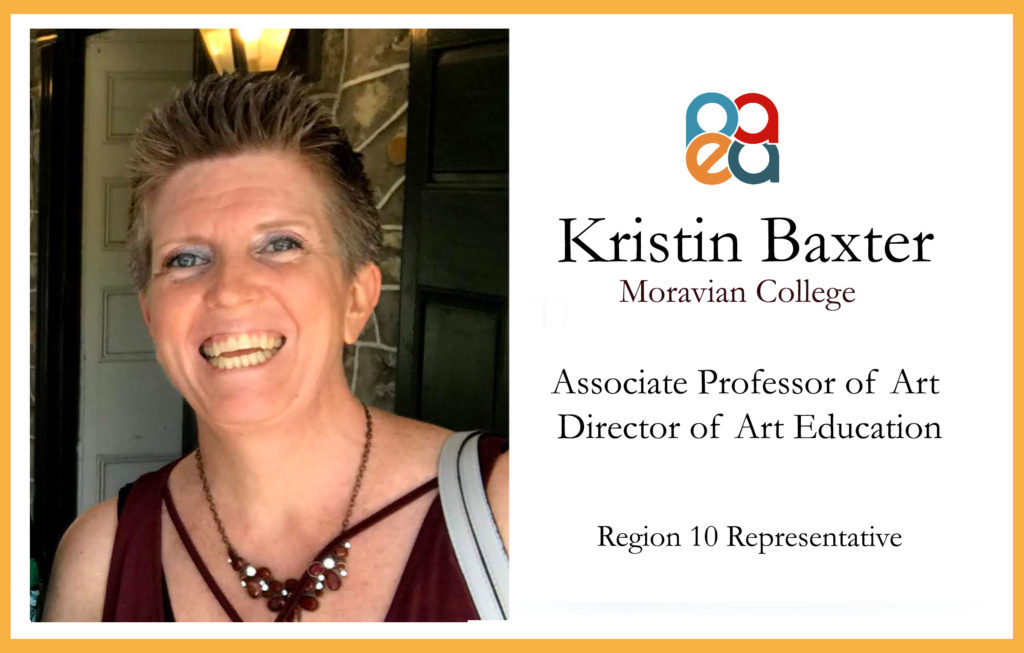
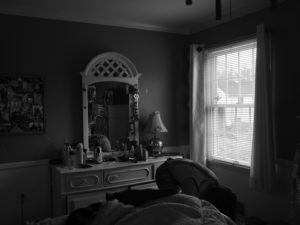
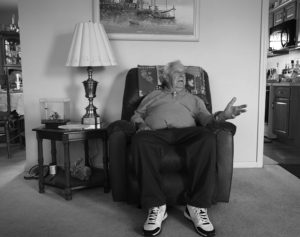
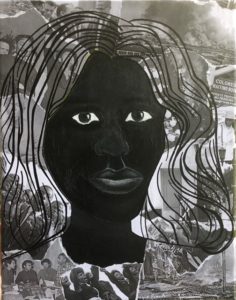

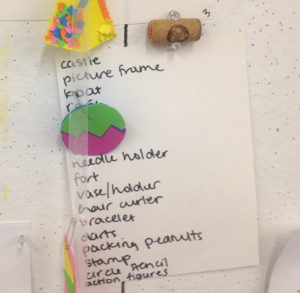
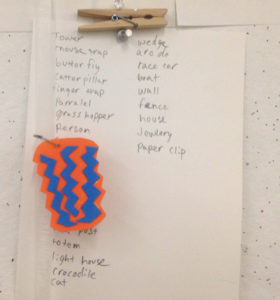
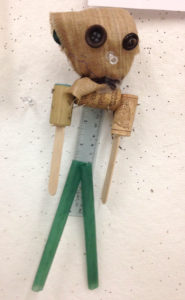
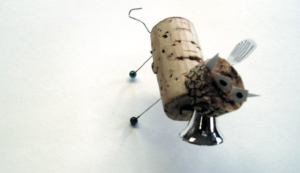
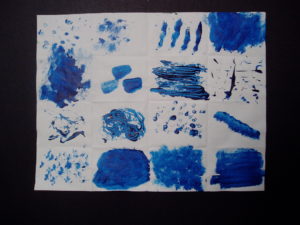
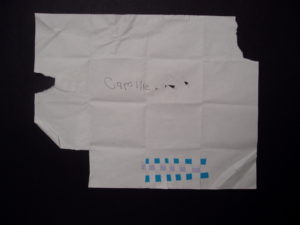
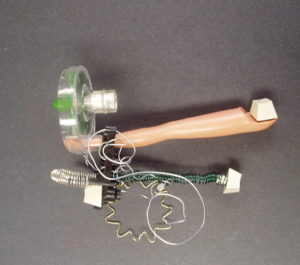
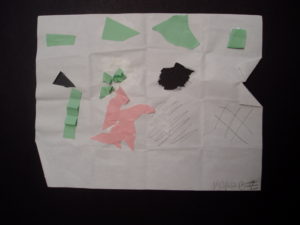

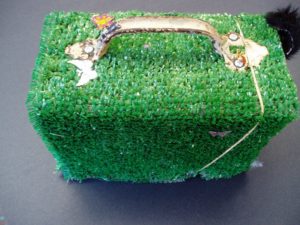
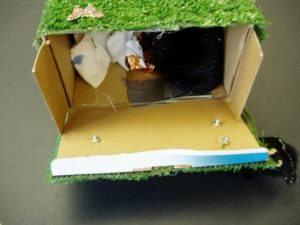
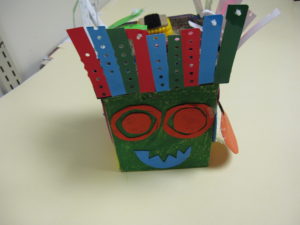
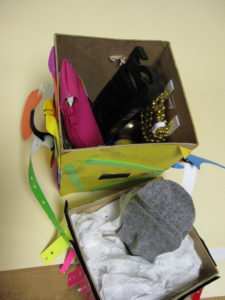
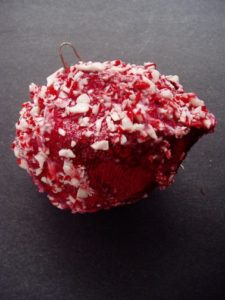
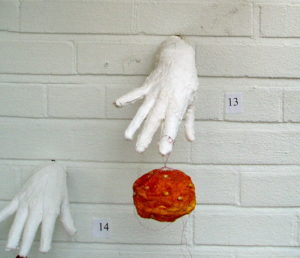
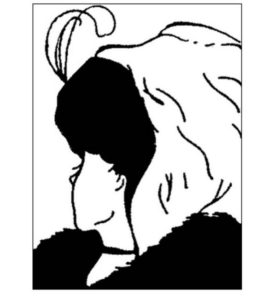
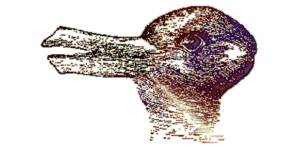

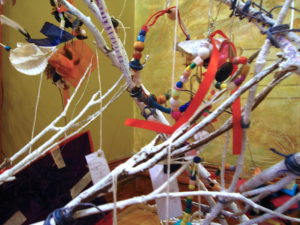
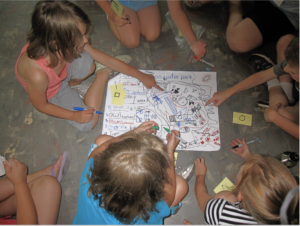
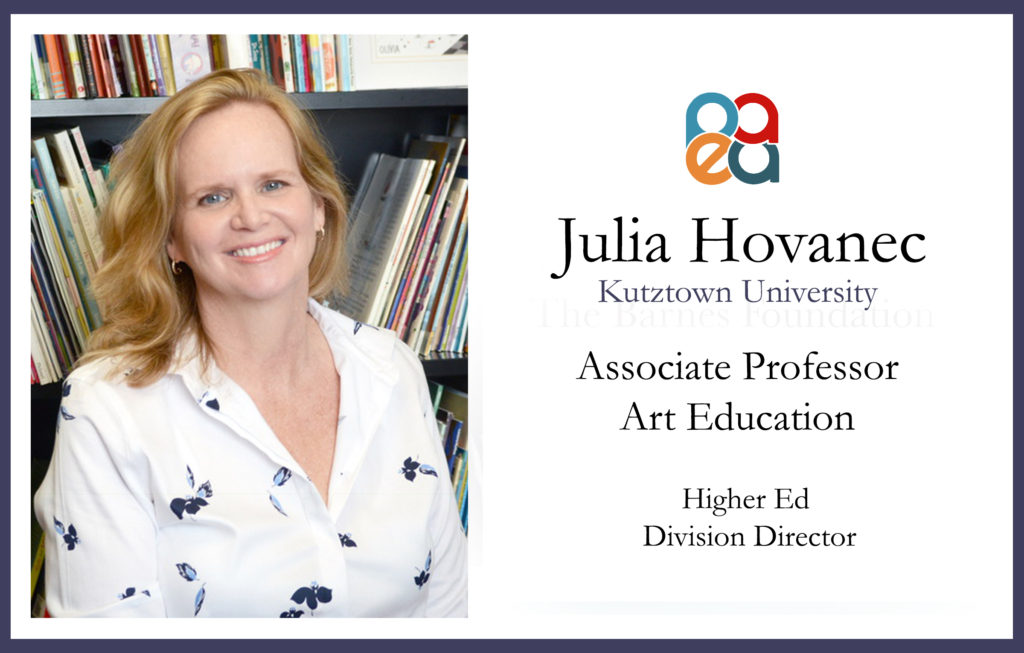
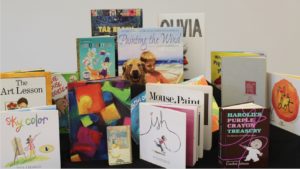
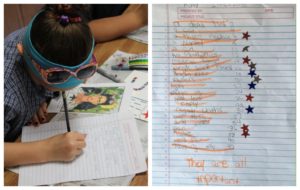
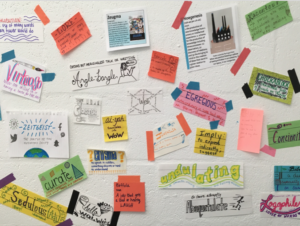
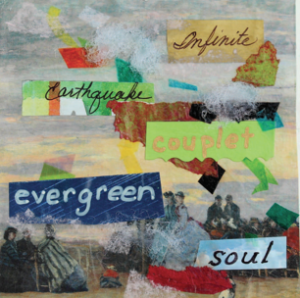
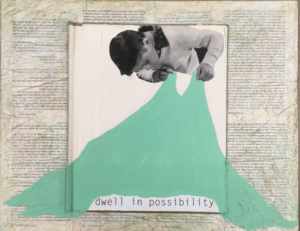
 D5 Creation
D5 Creation